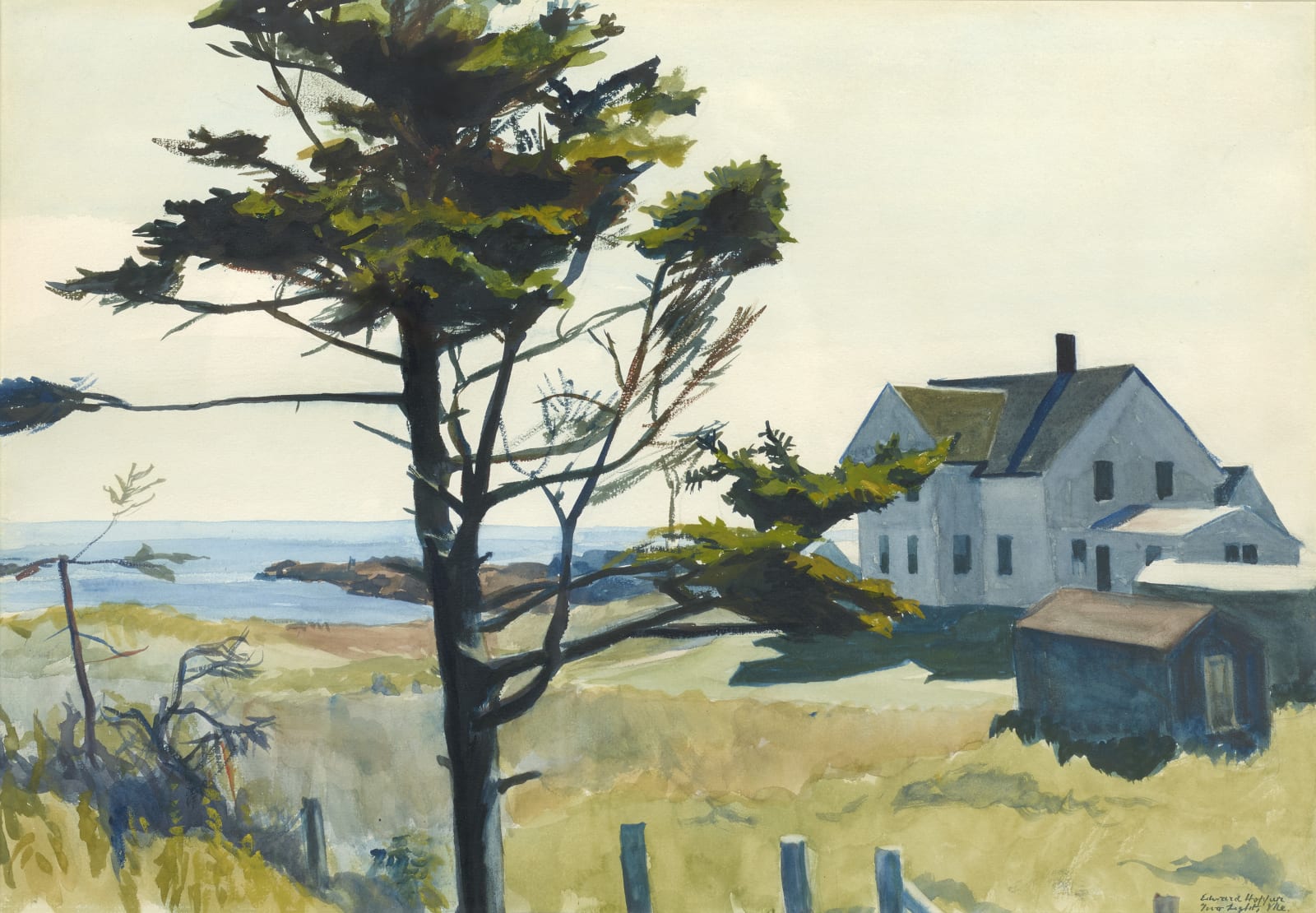Edward Hopper American, 1882-1967
35.6 x 50.8 cm
Scholar Carol Troyen writes: “Hopper painted Latham’s house as a gathering of geometries—a succession of crisply-edged cubes, rectangles, and triangles, all seen in shadow. There is no landscaping to soften the transition between the buildings and the ground, and no sign of anyone inside. The house is plain, even austere; it is silhouetted against a sky that Hopper painted with the soft yellow tints of a hazy summer day. Writing later in Hopper’s ledger book, Jo complained, “This a very rainy summer. Watercolors made with difficulty between downpours. This could explain wan skies and local color.” Despite the “wan” skies and the undistinguished architecture, Bill Latham’s House has a quiet nobility and delicacy that make clear what so many contemporary reviewers admired in Hopper’s work: his “delight in finding aristocratic pose and gesture in the humblest objects of our unromantic scene.”
“Hopper delivered Bill Latham’s House to Frank Rehn in late October 1927, along with five other watercolors (four of Maine, one of Vermont) from that summer’s work; nine more would follow a few weeks later. All were priced at $300, $50 more than Rehn had charged for watercolors earlier that year. The dealer would send a number of recent watercolors to Hopper’s show at the Wadsworth Atheneum in Hartford, Connecticut, in November 1928 and would feature others in Hopper’s third solo exhibition at his gallery in January 1929. But Bill Latham’s House was not available for those shows. The esteemed Boston watercolorist Charles Hovey Pepper (1864–1950) had already purchased it, just two weeks after it arrived at Rehn’s. Pepper was one of the “Boston Five,” a group of painters dedicated to bringing a brightly-colored, pleasant style of modernism to an extremely conservative city. Like Hopper, Pepper specialized in New England subjects; their compositions are sometimes similar, though Pepper’s work, while highly skilled, lacks the emotional resonance of Hopper’s. The two painters’ paths had crossed before, most recently in 1926, when Pepper, as the head of the Boston Art Club, included Hopper’s work in the Club’s fall watercolor exhibition. The two apparently did not remain in contact after that (though Pepper kept Bill Latham’s House for the rest of his life); nonetheless, it must have been gratifying for Hopper to have had his work snapped up by a fellow master of the watercolor medium.”
Provenance
The artist; to[Frank K.M. Rehn Gallery, New York, 1927]; to
Charles Hovey Pepper, Brookline, Massachusetts, 1927; to
Eunice Pepper Langenbach, Skowhegan, Maine, until 1961; to
Mr. and Mrs. James M. Perkins, Newton, Massachusetts, 1961;
[Hirschl & Adler Galleries, New York, 1985]; to
Kathryn and Robert Steinberg, New York, 1985; to
[James Graham & Sons, Inc., New York]; to
Daniel Koshland, Jr., California, by 1999; to
[Martha Parrish & James Reinish, Inc., New York]; to
Private collection, New York, until the present

